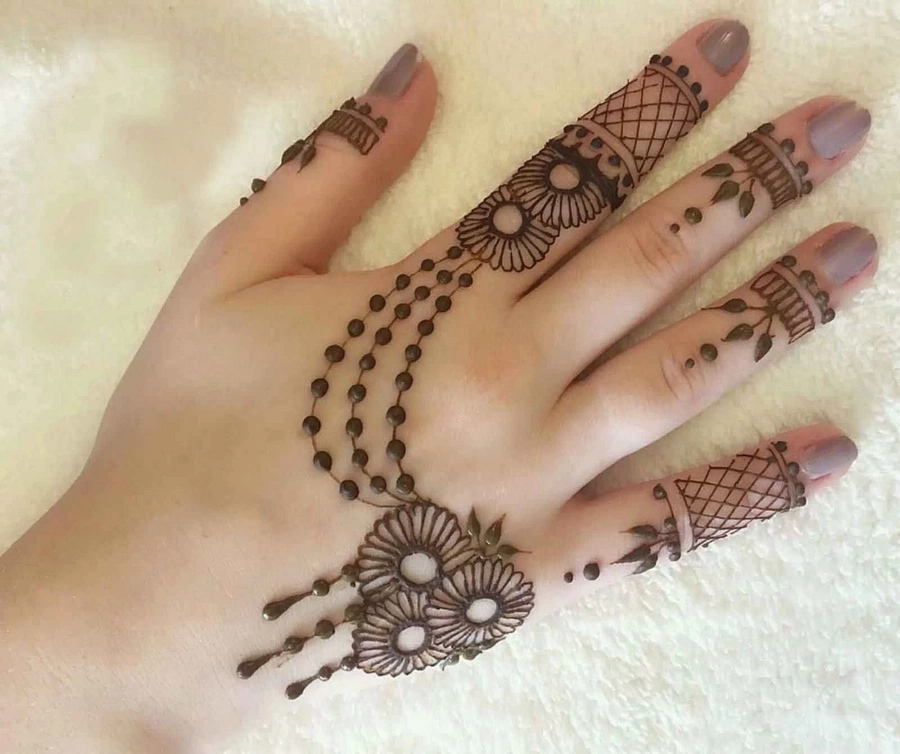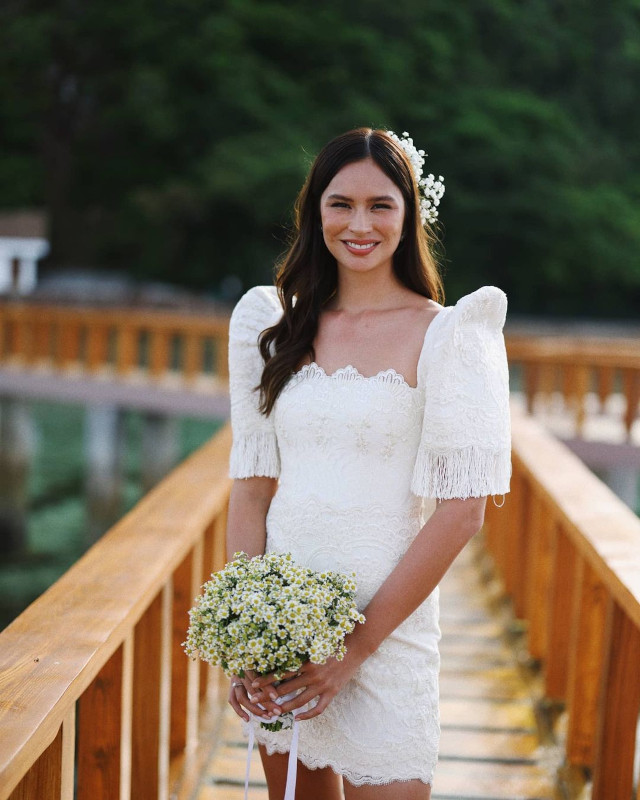Table Of Content
- Celebrating Festivals with Mehndi: Diwali, Eid, and Karva Chauth
- Easy Application, Captivating Designs - Embrace the Beauty of Our Tattoos Today!
- Akhil and Dhwani’s Heartwarming Wedding and Vows
- Startling Nail Trends For Brides This Wedding Season
- Gorgeous And Simple Henna Designs For The Minimalist Mehndi Enthusiasts
- Extraordinary Bridal Lehenga Styles for your Exclusive Modern…

While henna is largely safe to use, some formulations may contain harmful substances that cause allergic reactions or chemical sensitivity. As always, it's best to do a small patch test before committing to a larger design. You can expect the temporary dye to last for three to four weeks, with a gradual decrease in color depth and vibrancy over time. One of the most striking features of Indian Mehndi art is its intricate and detailed designs.
Celebrating Festivals with Mehndi: Diwali, Eid, and Karva Chauth
The henna paste is made from dried leaves of the henna plant, which are ground into a fine powder and mixed with water and essential oils to create a smooth paste. One of the most important ceremonies where Mehndi plays a significant role is the Indian wedding. The Mehndi ceremony is a pre-wedding ritual that takes place a day or two before the wedding. It is a joyous occasion where the bride and her female relatives and friends come together to celebrate and apply Mehndi on their hands and feet. The designs are intricate and elaborate, symbolizing love, prosperity, and good luck for the bride. Whether it is natural henna, black henna, white henna, or glitter henna, each type of henna offers its own unique properties and characteristics.
Easy Application, Captivating Designs - Embrace the Beauty of Our Tattoos Today!
It’s been used for centuries as a natural dye for hair and nails, and now its most well-known use is for body art. The temporary dye has—and still is—most popularly used to adorn women and men as part of their marriage celebrations. While the term "henna" is Arabic and is tied to many cultures and religions, it's most predominant in India where it's known as mehndi.
Akhil and Dhwani’s Heartwarming Wedding and Vows
While traditional Mehndi designs were created using a cone-shaped applicator, modern Mehndi artists now use a variety of tools and techniques to achieve different effects. Some artists use stencils to create precise and intricate designs, while others use freehand techniques to create more organic and fluid patterns. This blending of traditional and modern techniques allows for greater creativity and experimentation in Mehndi designs. Once the henna paste is applied, it needs to dry for several hours to allow the dye to stain the skin. During this time, the artist may use lemon juice or sugar water to help the henna paste adhere to the skin and enhance the color. After the paste has dried, it is gently scraped off, revealing the beautiful and intricate design underneath.
Startling Nail Trends For Brides This Wedding Season
Mehendi Designs For Valentine's Day 2024: Try These Easy And Unique Henna Designs - HerZindagi
Mehendi Designs For Valentine's Day 2024: Try These Easy And Unique Henna Designs.
Posted: Wed, 07 Feb 2024 08:00:00 GMT [source]
One of the most striking aspects of traditional Indian henna tattoo designs is their intricate and detailed nature. These designs often feature geometric patterns, floral motifs, and intricate lace-like designs. The level of detail and precision required to create these designs is truly remarkable, and it is a testament to the skill and artistry of the henna artists. In conclusion, Indian Mehndi art is a beautiful and intricate form of body art that showcases the rich cultural heritage of India. The designs and patterns used in Mehndi art are stunning and mesmerizing, and they are created with great skill and precision. Whether it is the peacock design, the paisley design, or any other intricate pattern, Indian Mehndi art is sure to captivate and impress.
Hands WILL BE BACK IN STOCK SOON! Sign up to our newsletter to be notified
The artists who specialize in this art form have a keen eye for detail and are able to create stunning patterns that are both symmetrical and aesthetically pleasing. These designs often feature floral motifs, geometric shapes, and intricate patterns that are inspired by nature and Indian culture. In conclusion, Mehndi art is not just about beautiful designs; it is a reflection of the rich cultural heritage of India.
Gorgeous And Simple Henna Designs For The Minimalist Mehndi Enthusiasts
From incorporating portraits to integrating elements from popular culture, these designs are a reflection of the present era while paying homage to the past. This dynamic fusion creates designs that are not just beautiful but also deeply meaningful. Apart from their aesthetic and celebratory significance, henna tattoos also hold a deeper cultural meaning. They are believed to have cooling properties and are often applied during hot summer months to provide relief from the scorching heat. The natural dye of henna is known to have a cooling effect on the body, making it a popular choice for people seeking respite from the heat.
Extraordinary Bridal Lehenga Styles for your Exclusive Modern…
In addition to weddings, henna tattoos are also popular during festivals like Diwali, Eid, and Karva Chauth. These festivals are celebrated with great enthusiasm and joy, and henna plays a significant role in enhancing the festive spirit. People of all ages, both men and women, get henna tattoos during these occasions as a way to express their joy and celebrate the cultural traditions. The Mehndi ceremony is not just about applying henna; it is a time for bonding and celebration.
Merriman's Kapalua restaurant in Maui shares culture of kindness through rich culinary history

Mehndi artists have taken the art form to new heights, experimenting with different styles and techniques. From traditional Indian designs to contemporary fusion patterns, there is a wide range of options available for those who want to adorn their hands and feet with Mehndi. Moreover, henna has gained popularity beyond the borders of India, becoming a global trend in recent years. It is now commonly seen in Western countries, where people embrace it as a form of body art and self-expression. However, it is important to recognize and respect the cultural significance of henna and its roots in Indian traditions. With the rise of globalization, mehndi has traveled far beyond its traditional boundaries.
It has become a popular form of body art, with people from different cultures and backgrounds embracing the intricate designs and vibrant colors of Indian Mehndi. Mehndi artists are now sought after for weddings, festivals, and other special occasions, both in India and abroad. Mehndi is not just a form of body art; it is also an integral part of Indian rituals and celebrations. Mehndi is often applied to the hands and feet of the bride before her wedding day as a symbol of good luck and blessings.
You can also use your henna designs to tell a story—or your own love story—which is what this bride did. Mehndi has seamlessly adapted to modern fashion trends by incorporating contemporary elements into traditional designs. This fusion caters to the preferences of a global audience seeking both elegance and innovation. Intricate lace-like patterns denote delicacy, while peacock motifs represent beauty and grace. Understanding these symbols adds depth to the appreciation of mehndi’s significance.

No comments:
Post a Comment